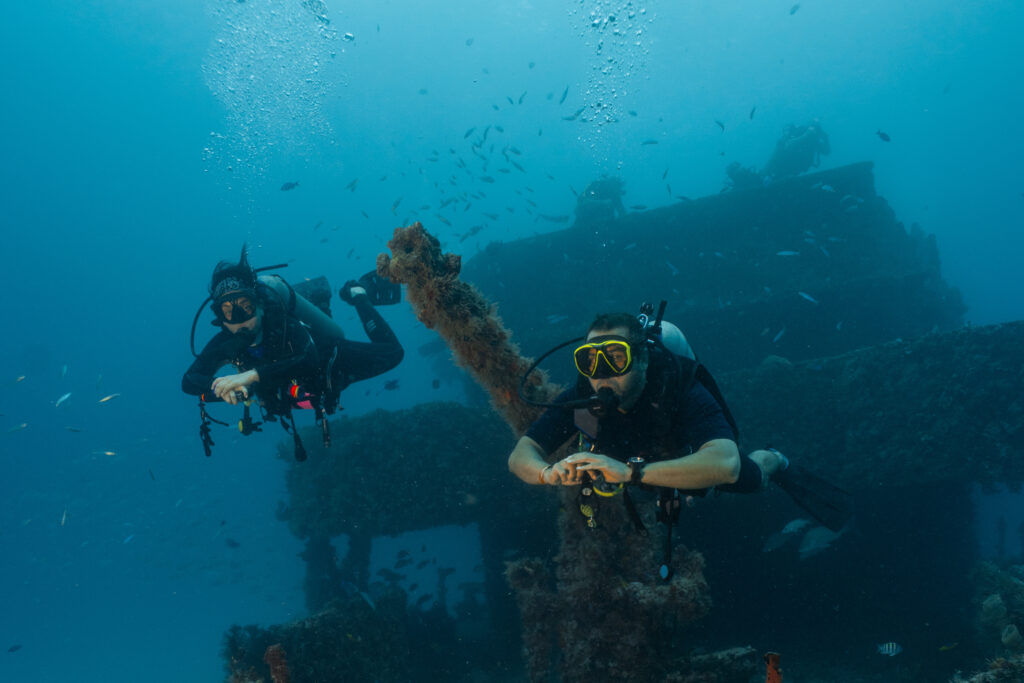What is Professional Diving?

Professional diving encompasses a range of underwater activities performed by individuals trained and certified to work in various underwater environments. These divers are equipped with specialized skills and equipment to carry out tasks that support industries such as commercial oil and gas, scientific research, military operations, and public safety. The importance of professional diving lies in its contribution to the economy, scientific discoveries, and public safety operations, making it an indispensable occupation with a rich history and evolving technology.
What is a Deco Mix?

Decompression mix, or deco mix, is a specialized gas mixture used in scuba diving to facilitate safer and more efficient decompression during ascent. Decompression is a critical phase in diving where accumulated inert gases, primarily nitrogen, are safely expelled from a diver’s body to avoid decompression sickness (DCS). Deco mixes are tailored to optimize the elimination of these gases, particularly during deep or prolonged dives where standard air might not suffice. Understanding and correctly using deco mixes can significantly enhance a diver’s safety, reducing the risk of DCS and other diving-related ailments.
What is Heliox?

Heliox is a breathing gas mixture composed of helium and oxygen, widely used in deep-sea diving due to its unique properties that improve safety and performance under extreme conditions. Unlike standard air, which consists of approximately 78% nitrogen and 21% oxygen, Heliox replaces the nitrogen with helium. This substitution is crucial in mitigating the adverse effects of nitrogen narcosis and oxygen toxicity that divers can experience at greater depths. Heliox has been a game-changer for technical and commercial divers, enabling them to work and explore at depths that would otherwise be highly hazardous.
What is Gas Blending?

Gas blending, a crucial process in scuba diving, involves mixing various gases to create a breathable mixture suitable for different diving conditions. This practice is essential for ensuring diver safety and enhancing dive performance, particularly in deeper or more prolonged underwater explorations. By carefully blending gases, divers can mitigate the risks associated with breathing high-pressure oxygen and nitrogen, such as oxygen toxicity and nitrogen narcosis. Gas blending has become a fundamental aspect of modern scuba diving, enabling divers to explore the underwater world more safely and efficiently.
What is decompression in Scuba Diving?

Decompression is a critical aspect of scuba diving and refers to the process by which a diver transitions from a higher ambient pressure to a lower ambient pressure during their ascent to the surface. This process is essential for the safe elimination of dissolved inert gases, such as nitrogen, from the body’s tissues. Failure to properly decompress can result in decompression sickness (DCS), a potentially life-threatening condition. This entry will discuss the principles of decompression, the physiological implications, decompression procedures, and safety considerations for scuba divers.
What is Oxygen?

Oxygen is a fundamental element essential for the survival of almost all living organisms. In the context of scuba diving, understanding oxygen’s properties and its role is crucial for both safety and performance. This article delves into the various aspects of oxygen, from its basic chemistry to its physiological effects on divers, and the technologies used to manage it underwater. As one of the critical components in breathing gas mixtures, oxygen’s management and the equipment designed for its delivery are vital for successful and safe scuba diving experiences.
What is Pressure?

Pressure is a fundamental concept in physics, defined as the force exerted per unit area. In the context of scuba diving, understanding pressure and its effects is crucial for safety and efficiency. Pressure plays a pivotal role in determining how divers experience the underwater environment, affecting everything from breathing to buoyancy. As divers descend into the water, the pressure increases, impacting both their equipment and bodies in significant ways. This article will discuss the principles of pressure, its effects on the human body, the health risks associated with changes in pressure, techniques for managing these changes, and the equipment designed to withstand them.
What is Rapture of the Deep?

Rapture of the Deep, commonly known as nitrogen narcosis, is a condition experienced by scuba divers at significant depths. This phenomenon, resulting from the increased partial pressure of nitrogen when diving, can lead to a range of symptoms that affect cognitive and motor functions. Understanding Rapture of the Deep is crucial for divers to ensure safe practices and avoid potentially hazardous situations underwater.
What is Vertigo?

Vertigo, a sensation of spinning or dizziness, can significantly impact one’s sense of balance and orientation. In the context of scuba diving, this condition becomes particularly relevant and potentially hazardous. Divers who experience vertigo underwater may struggle with maintaining their equilibrium, which can lead to disorientation and dangerous situations. This article delves into the causes, impacts, diagnosis, prevention, and management of vertigo specifically for scuba divers.
What is “Out of Air”?

In the context of scuba diving, “out of air” refers to a situation where a diver has depleted their air supply, presenting a critical emergency. This term underscores the paramount importance of air management for diver safety. Proper planning, vigilance, and awareness are essential to prevent such incidents, as running out of air underwater can lead to severe consequences, including drowning. Understanding the factors that contribute to air depletion and the measures to prevent and handle such emergencies is crucial for every diver.
